
SIGN UP TO RECEIVE
15% OFF
IN YOUR NEXT TOUR

The Pink Iguana from Galapagos: A new endemic specie
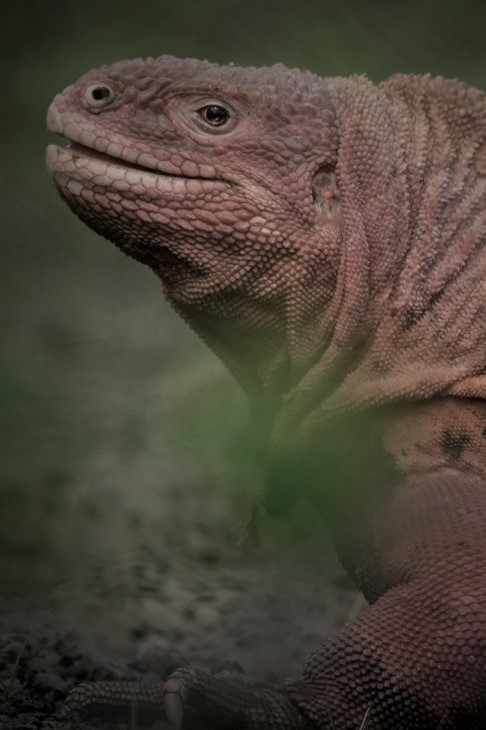
The Pink Iguana from Galapagos: A new endemic specie
SCROLL DOWN TO READ
The Pink Iguana from Galapagos: A new endemic specie
Despite the attention given to them, the Galápagos have not yet finished offering evolutionary surprises. When Darwin visited the Galápagos, he observed both marine (Amblyrhynchus sp.) and land (Conolophus sp.) iguanas, but did not encounter a rare pink black-striped land iguana which; surprisingly, remained unseen until 1986, when was discovered accidentally by a Park Ranger. Initially it was believed that these pink iguanas were albino or individuals that had been stained by some external agent, but a field visit to the volcano proves that they were in fact a different species: the Galápagos Pink Land Iguana (Conolophus Marthae) endemic to Wolf volcano on Isabela Island.
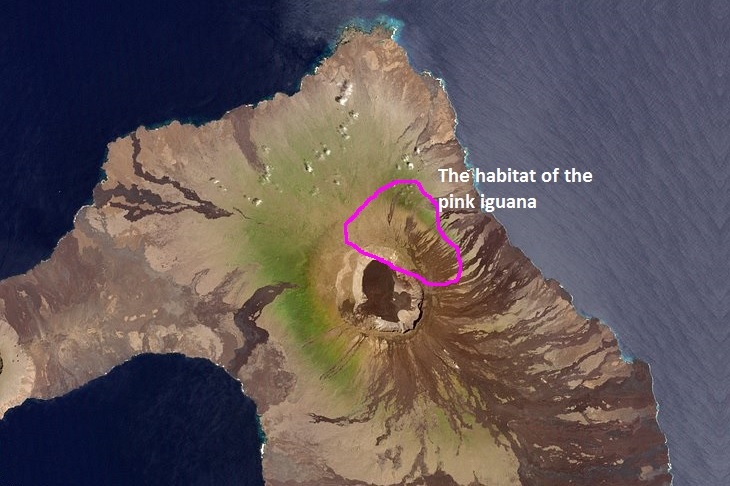
Genetic studies suggest that the split of the marine and land iguana lineages could have occurred as late as 11 million years ago, when the archipelago did not have the current configuration and none of the present islands had yet emerged, suggesting that the Pink Iguana might have suffered severe demographic reduction in the past. In fact, the oldest extant islands in the archipelago, San Cristóbal and Española, are at least 4 and 5 million years old, respectively, if not older. Thus, given its present distribution, the Pink Iguana form clearly represents a conundrum because it occurs only on Volcan Wolf, which is considered younger than Volcan Sierra Negra, the oldest volcano of Isabela.
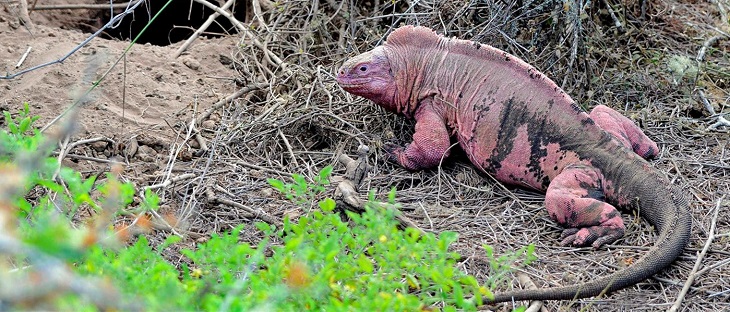
Similar in size, the Pink Iguana becomes the third species of land iguanas in Galapagos, being the other two the yellow iguana (Conolophus subcristatus) and pale iguana of Santa Fe island (Conolophus pallidus). Pink Iguana is not so resilient to the sun as their relatives. They have a limited to a range less than 30 km² with a core area less than 10 km², concentrated at an altitude of 500 to 1700 meters above sea level and only in the Wolf volcano on Isabela Island. There may be a seasonal shift in altitude with Pink Iguanas concentrating at the crater rim at 1700 meters during the months of May to July and descending to 600 meters when vegetation starts drying out. This iguana has not been seen inside the caldera.
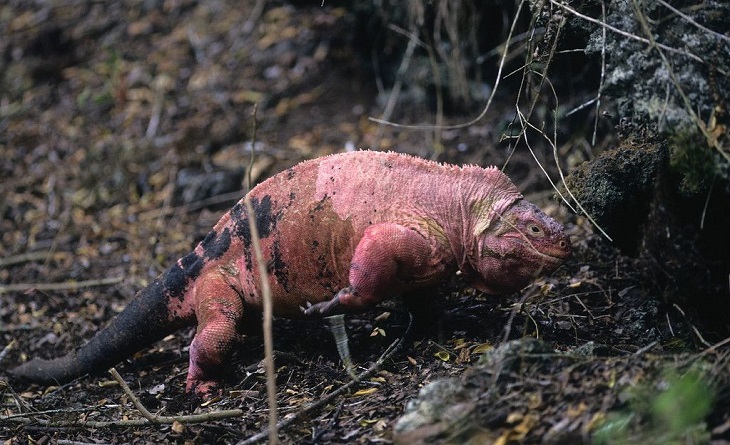
During the last 9 years no juveniles were observed, suggesting non effective reproduction habits or not good places for nesting. The Galápagos Pink Iguana can coexist with its relative the yellow Galápagos Land Iguana (C. subcristatus) but isn’t clear if the two species of iguanas compete for nesting sites on Wolf Volcano. The population of this iguana is very small (192 mature individuals) and prone to genetic, demographic, and environmental stochasticity. Population trends are unknown but there is genetic evidence of past reduction and current juvenile recruitment has not been observed. Black Rats and feral cats are present in the range and are likely predators, as is known for other Galápagos iguanas. The presence of ectoparasites and possible endoparasites is a potential concern and its impact on population fitness is unknown.
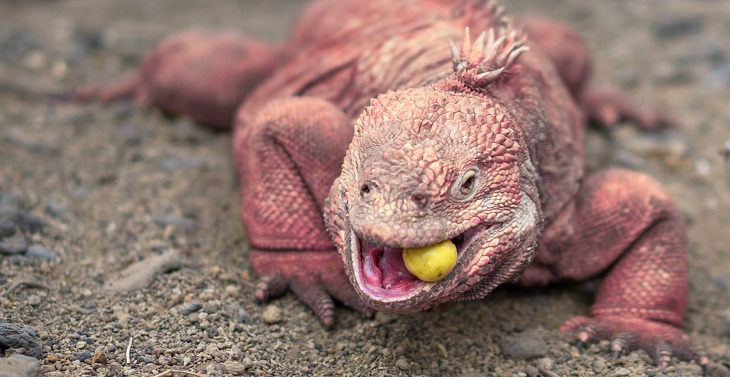
Hybridization and introgression between C. marthae and C. subcristatus have occurred in the past on Volcan Wolf, the extent and effect of which has not been fully evaluated yet. Volcanic eruptions and periodic droughts may also impact this species. The entire range of the species is limited to Volcan Wolf on that particular island, and nowhere else in the Galapagos archipelago. There is not enough biological and ecological information of this iguana, but there are already plans to start breeding in captive, in the meantime scientists are investigating if anthropogenic, bacteriological or natural factors are behind of this reduced population.
